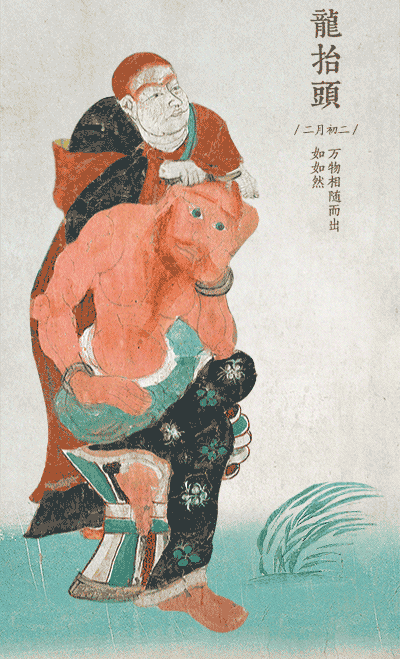 |
|
[Photo/Dunhuang Research Academy] |
The traditional Chinese Longtaitou Festival, or Dragon Head Raising Festival, falls on the second day of the second lunar month each year, which refers to the start of spring and farming. This year's festival landed on March 18.
The Dunhuang Research Academy released a series of ancient Dunhuang murals online Sunday, revealing rich customs and traditions from the Longtaitou Festival, including sacrifice, haircuts, farming, enlightening education and tasting "dragon food".
Auspicious sign
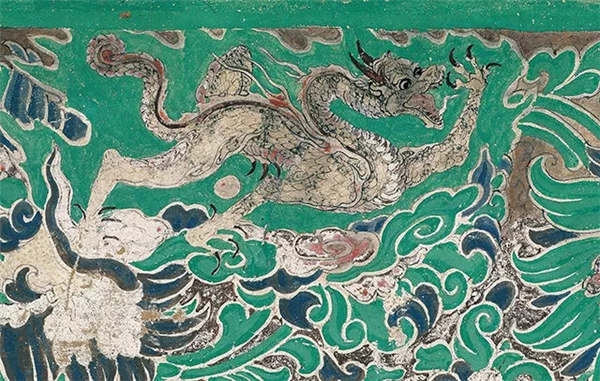 |
|
Dragon, Western Xia regime (1038-1227) [Photo/Dunhuang Research Academy] |
According to the Dunhuang Research Academy, in ancient China, especially prior to the Qin (221-206 BC) and Han (206 BC-AD 220) dynasties, the Longtaitou Festival was considered a day where heaven and earth were connected to each other, and nature and humankind were integrated. Therefore praying, sacrifice, or commemorative activities would be held to wish for happiness, health and auspiciousness.
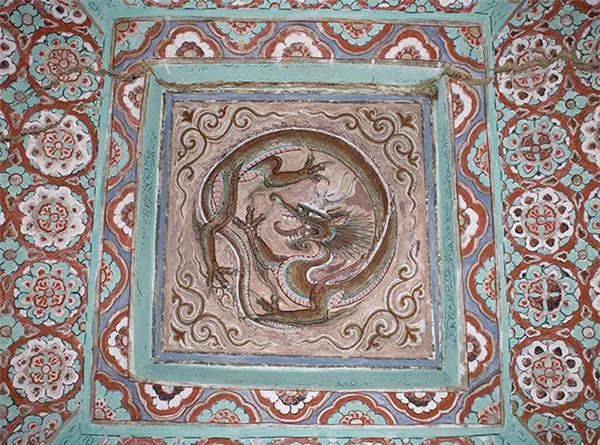 |
|
[Photo/Dunhuang Research Academy] |
Farming
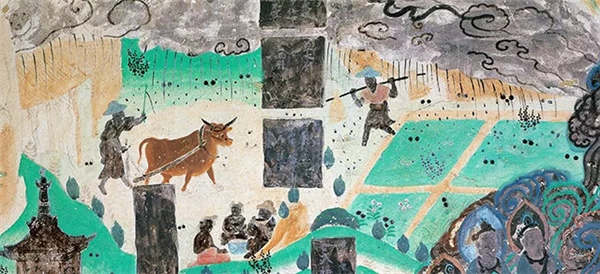 |
|
Farming in the Rain, Tang Dynasty (618-907) [Photo/Dunhuang Research Academy] |
From the perspective of the 24 solar terms, the Longtaitou Festival falls around the Rain Water, Awakening of Insects and Spring Equinox periods, at a time when many parts of China are in the rain season. Ancient people believed rain was the dragon's contribution, as the dragon was both an auspicious creature and dominated the weather. Timely wind and rain makes for good farming. The mural in Cave 23 of Mogao Grottoes portrays a farming scene in gentle rain.
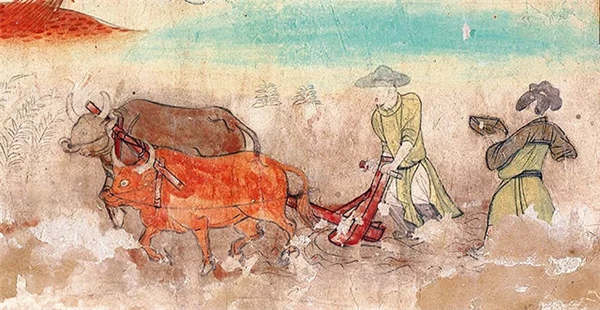 |
|
Cow Ploughing, Tang Dynasty (618-907) [Photo/Dunhuang Research Academy] |
In ancient China during the Longtaitou Festival, it was believed that to make the dragon raise its head smoothly, all household chores should be stopped. This includes needlework, to avoid "hurting the dragon's eyes", and clothes washing, to avoid "injuring the dragon’s skin".
It is also said on the night before the Longtaitou Festival, stone mills in each house should be set up to not block the dragon from raising its head. Only by doing this would the spring rain be sustained and the year would see a ripe harvest.
Haircut
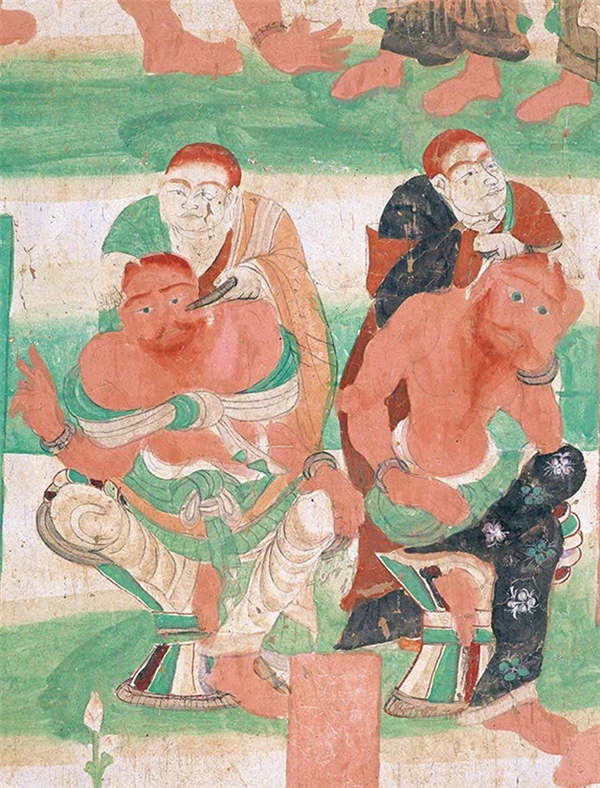 |
|
Tonsure, the Five Dynasties (907-960AD) [Photo/Dunhuang Research Academy] |
The most famous tradition on Longtaitou Festival was getting a haircut. Children got haircuts in hopes for healthy growth and a promising future. Grown-ups got haircuts to hope for good luck and a smooth new year.
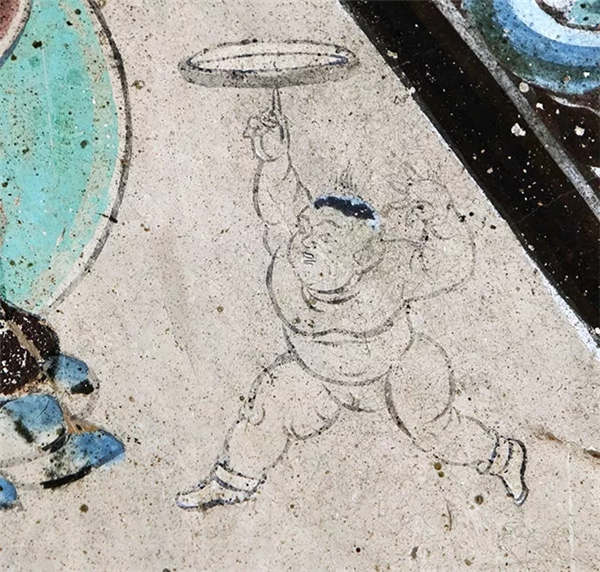 |
|
A Child with a Tray on Top, Tang Dynasty [Photo/Dunhuang Research Academy] |
Enlightening education
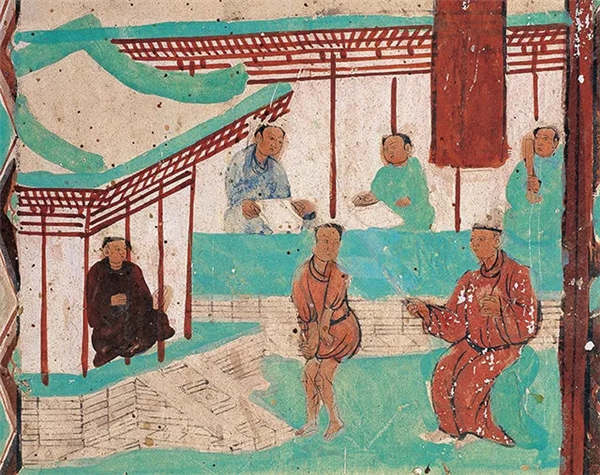 |
|
[Photo/Dunhuang Research Academy] |
The third day of the second lunar month is the birthday of Wenchang God, in charge of official rank. So during ancient times, an enlightenment ceremony would be held at the Longtaitou Festival by drawing a cinnabar dot between children's eyebrows, to wish for a wise mind and learned spirit.
A Tang Dynasty mural from Cave 468 portrays a daily life scene in ancient schools, with a teacher giving a lesson to a student and two other pupils reading in the room behind.
Tasting "dragon food"
 |
|
[Photo/Dunhuang Research Academy] |
Food for the Longtaitou Festival as always named after the dragon; noodles were called "dragon beard noodle", dumplings were called "dragon ear" or "dragon horn", rice was called "dragon seed", and eating pig’s head was called "eating dragon head". In doing so, people in ancient times expressed their strong wishes for a golden harvest.
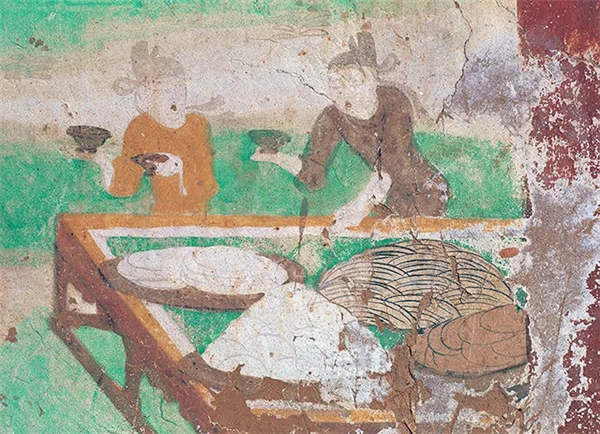 |
|
[Photo/Dunhuang Research Academy] |

Presented by Chinadaily.com.cn Registration Number: 10023870-7
Copyright © Ministry of Culture, P.R.China. All rights reserved